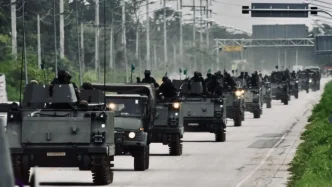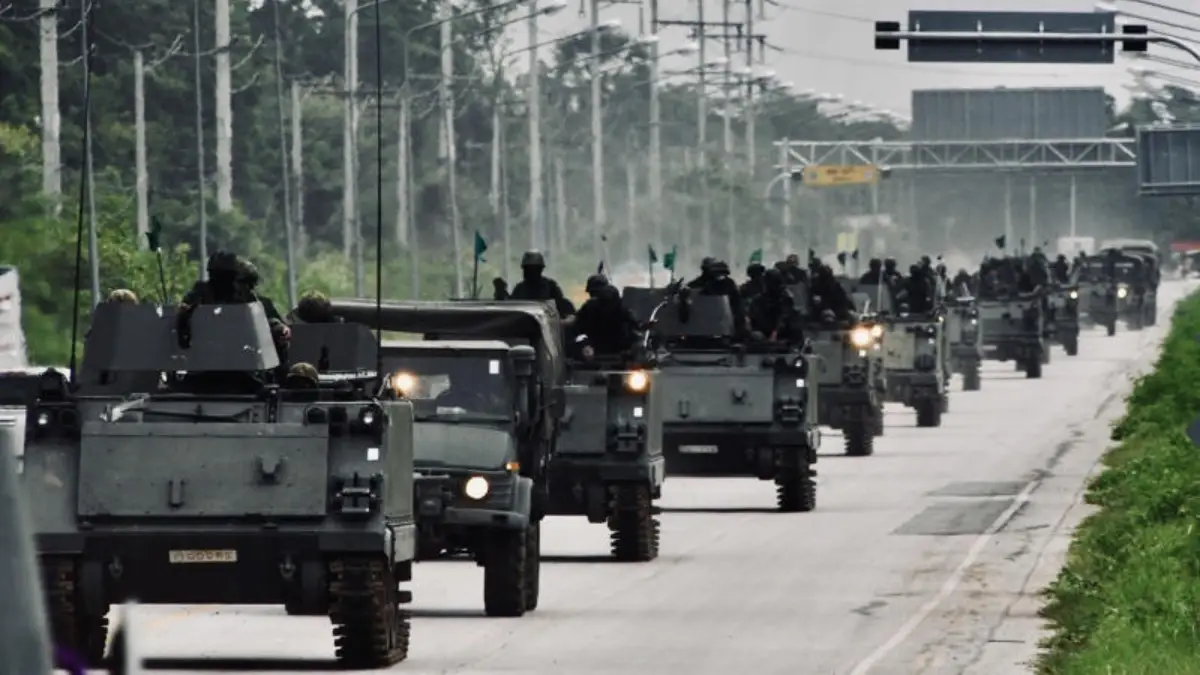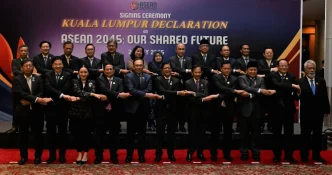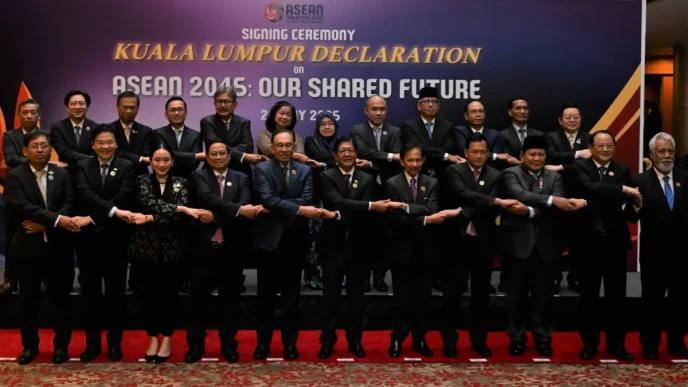Phnom Penh and Bangkok find themselves at a critical juncture, balancing accusations of ceasefire violations with renewed efforts to solidify bilateral ties. Recent border skirmishes have tested a fragile peace agreement, while ASEAN founding members have stepped in to commend peace initiatives. At the same time, Thailand and Vietnam are crafting an action plan to implement a strategic partnership, signaling broader regional cooperation. These developments underscore the complex interplay of conflict and diplomacy in Southeast Asia, with implications for stability across the ASEAN bloc.
Ceasefire Violations: A Persistent Thorn
Tensions along the Cambodia-Thailand border have flared once again, with Thailand accusing Cambodia of repeated ceasefire violations. The disputed area, often a flashpoint for historical grievances tied to territorial claims, has seen intermittent clashes despite agreements aimed at maintaining peace. Thai officials have expressed frustration over what they describe as deliberate incursions, pointing to specific incidents in recent months that have disrupted border communities and strained military relations.
Cambodia, however, has firmly rejected these allegations, asserting that its actions are in line with agreed-upon protocols. Phnom Penh maintains that any perceived violations are misunderstandings or misinterpretations of troop movements intended to secure its own sovereignty. This back-and-forth highlights the fragility of trust between the two neighbors, a dynamic rooted in decades of unresolved disputes over border demarcations and cultural heritage sites like the Preah Vihear Temple, which has been a focal point of past conflicts.
The accusations come at a time when both nations are under scrutiny from regional partners to uphold stability. ASEAN, as a collective, has long emphasized the importance of dialogue over confrontation, and the current situation risks undermining broader efforts to present a unified front on issues like economic integration and security cooperation. Analysts suggest that without a robust mechanism for real-time communication and conflict de-escalation, such misunderstandings could escalate into larger confrontations, drawing in external mediators or exacerbating domestic political pressures in both countries.
ASEAN Applauds Peace Efforts Despite Challenges
Amid these tensions, ASEAN founding members have publicly hailed Cambodia and Thailand for their commitment to peace initiatives along the border. High-level meetings and joint statements from regional leaders have emphasized the importance of dialogue, with several member states offering to facilitate discussions if needed. This support is seen as a critical endorsement, signaling to both Phnom Penh and Bangkok that the region stands behind efforts to prevent a return to open conflict.
One notable initiative involves confidence-building measures, such as joint patrols and cultural exchanges, aimed at fostering mutual understanding among border communities. These efforts, while small in scale, are viewed as essential steps toward rebuilding trust. ASEAN’s backing provides a diplomatic buffer, allowing both nations to address grievances without losing face domestically or internationally. However, the effectiveness of these measures remains uncertain, as past agreements have often been undermined by political shifts or localized disputes.
The commendation from ASEAN also serves as a reminder of the bloc’s role in maintaining regional harmony. For smaller member states, the Cambodia-Thailand dynamic is a test case for how ASEAN can manage internal disagreements without compromising its collective agenda. If successful, these peace efforts could set a precedent for handling similar disputes elsewhere in the region, such as maritime tensions in the South China Sea.
Vietnam and Thailand: A New Chapter in Partnership
Parallel to the border situation, Thailand is deepening its relationship with Vietnam through a forthcoming action plan to implement a strategic partnership. This development, announced during recent bilateral talks, focuses on enhancing cooperation in trade, security, and cultural exchange. Both nations, key players in ASEAN’s economic landscape, see the partnership as a way to bolster their positions amid global uncertainties, including supply chain disruptions and geopolitical rivalries.
The action plan is expected to prioritize joint ventures in agriculture, tourism, and technology, sectors where both countries have complementary strengths. For Vietnam, closer ties with Thailand offer access to advanced logistics networks and markets, while Thailand benefits from Vietnam’s rapidly growing consumer base and labor force. Officials from both sides have expressed optimism about the potential for this partnership to serve as a model for intra-ASEAN collaboration, potentially inspiring similar frameworks with other member states.
Security cooperation is another cornerstone of this agreement, with discussions underway to address shared challenges such as transnational crime and cybersecurity. Given their geographic proximity and overlapping interests in regional stability, Vietnam and Thailand are well-positioned to lead on these fronts. This partnership also sends a signal to other ASEAN nations that bilateral cooperation can thrive even as broader regional tensions persist, offering a counterbalance to the Cambodia-Thailand discord.
Historical Context and Regional Implications
The current dynamics between Cambodia and Thailand cannot be fully understood without considering their historical context. Border disputes, particularly over areas like Preah Vihear, have simmered for generations, often fueled by nationalist sentiments on both sides. These tensions have occasionally erupted into military confrontations, most notably in the early 2010s, when skirmishes resulted in casualties and international intervention. While outright conflict has been avoided in recent years, the underlying issues remain unresolved, leaving room for periodic flare-ups.
Regionally, the situation is a microcosm of the challenges facing ASEAN as it seeks to balance sovereignty with collective goals. The bloc’s principle of non-interference often limits its ability to mediate directly, relying instead on moral suasion and behind-the-scenes diplomacy. For Cambodia and Thailand, this means that while ASEAN’s support is valuable, the onus remains on them to find a lasting solution. Failure to do so could embolden domestic hardliners in either country, risking a cycle of retaliation that undermines regional stability.
Moreover, the simultaneous advancement of Vietnam-Thailand ties illustrates the uneven pace of integration within ASEAN. While some bilateral relationships flourish, others remain mired in mistrust, reflecting the diverse political systems, historical grievances, and economic disparities among member states. This disparity poses a long-term challenge for ASEAN’s vision of a cohesive community, particularly as external powers like China and the United States vie for influence in the region.
Domestic Pressures and the Path Forward
Domestically, both Cambodia and Thailand face pressures that complicate their border dialogue. In Cambodia, the government must navigate public expectations of defending national pride, especially given the cultural significance of disputed sites. Prime Minister Hun Sen’s administration has historically taken a firm stance on sovereignty issues, and any perceived concession could be politically costly, particularly as the country approaches future elections.
In Thailand, the military’s influence over border policy adds another layer of complexity. With a history of coups and political instability, the Thai government often uses border issues to rally domestic support, framing them as matters of national security. This dynamic limits flexibility in negotiations, as any agreement must withstand scrutiny from both the public and powerful military factions.
Looking ahead, the role of civil society and local communities will be crucial. Grassroots initiatives, such as cross-border trade agreements and cultural festivals, have the potential to build trust from the ground up, complementing high-level diplomacy. ASEAN’s continued engagement, meanwhile, can provide the necessary framework for sustained dialogue, ensuring that temporary setbacks do not derail long-term peace efforts.
A Delicate Balance
As Cambodia and Thailand grapple with ceasefire tensions, their parallel efforts to strengthen regional ties—whether through ASEAN-backed peace initiatives or strategic partnerships like that with Vietnam—offer a glimmer of hope. The border remains a volatile fault line, but with sustained commitment and international support, a durable resolution may yet emerge. For now, the region watches closely, aware that the outcome will reverberate far beyond the immediate frontier, shaping the future of ASEAN’s unity and resilience.
















